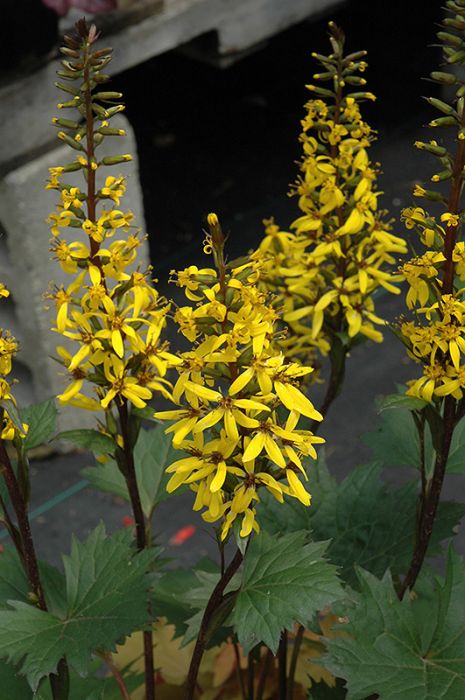Top Ten Perennials – Shade and Sun
Gary's Top Ten Perennials for both Sun and Shade!



Out of stock
Coming soon, still growingThis dwarf cultivar of The Rocket is an excellent choice where space is a concern; long spikes of bright yellow flowers rise above dark green foliage that is coarse in texture; Desires moist soil and lots of shade
Discover an unparalleled selection of perennials at Gertens! With the largest variety in Minnesota, we offer endless options of colorful perennials, natives, and pollinator plants to beautify your garden year after year. From vibrant flowers to lush foliage, our perennials are perfect for adding beauty and charm to your outdoor space. Visit Gertens today and see why we're known as Minnesota's Destination Garden Center!
Height: 3 feet
Spread: 30 inches
Sunlight: ![]()
![]()
Hardiness Zone: 4a
Other Names: Rayflower
Description:
This dwarf cultivar of The Rocket is an excellent choice where space is a concern; long spikes of bright yellow flowers rise above dark green foliage that is coarse in texture; Desires moist soil and lots of shade
Ornamental Features
Little Rocket Ligularia features bold spikes of yellow flowers rising above the foliage from mid to late summer. Its large serrated heart-shaped leaves remain dark green in color throughout the season. The fruit is not ornamentally significant. The deep purple stems are very colorful and add to the overall interest of the plant.
Landscape Attributes
Little Rocket Ligularia is an herbaceous perennial with a rigidly upright and towering form. Its wonderfully bold, coarse texture can be very effective in a balanced garden composition.
This is a relatively low maintenance plant, and is best cleaned up in early spring before it resumes active growth for the season. Deer don't particularly care for this plant and will usually leave it alone in favor of tastier treats. It has no significant negative characteristics.
Little Rocket Ligularia is recommended for the following landscape applications;
Planting & Growing
Little Rocket Ligularia will grow to be about 3 feet tall at maturity, with a spread of 30 inches. It grows at a medium rate, and under ideal conditions can be expected to live for approximately 20 years.
This plant does best in partial shade to shade. It prefers to grow in moist to wet soil, and will even tolerate some standing water. It is not particular as to soil pH, but grows best in rich soils. It is somewhat tolerant of urban pollution. This particular variety is an interspecific hybrid. It can be propagated by division; however, as a cultivated variety, be aware that it may be subject to certain restrictions or prohibitions on propagation.
| Common Family Name | Ligularia |
|---|---|
| Gerten Grown Plants | Gerten Grown Plants |
| Available for Pre-Order | No |
| Sun Preference | Part-Sun, No-Sun |
| Bloom Time | July, August |
| Mature Spread (Range) | 24" - 36" |
| Mature Height (Range) | 25" - 36" |
| USDA Hardiness Zone | 4, 5, 6, 7, 8 |